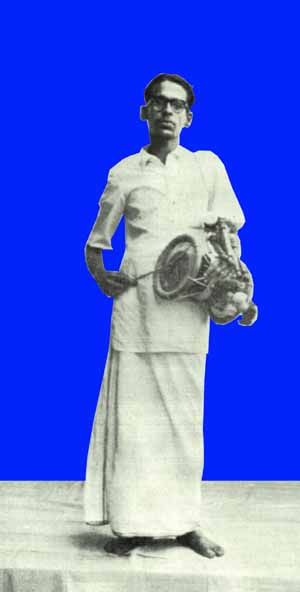
The idakka and udaku (udakai) represent a class of hour-glass drums from south India. They are very similar to the damaru which is found throughout India. Where the damaru is played by rattling knotted cords against the resonators, the udakai/iddaka is played by either the hand or a small stick (sometimes both).
The relationship between udakia and idakka is not clear. Both terms are clearly cognates of each other. However the term idakka usually refers to a slightly larger drum that may be played with sticks while the term udakai usually refers to a slightly smaller drum played with the hand. The situation is complicated by a wide variation in both size and technique. It is tempting to simply declare iddaka and udakai to be different instruments, but we really cannot do that.
The construction of this instrument shows considerable variation. The length is generally about 12-20 inches in length in length. It has an hour-glass shaped frame made of wood or metal. Upon which are two simple membranes. These membranes may be either goatskin, calfskin, or the peritoneum of some larger animal. Both membranes are attached two wooden rings which are laced with rope. The smaller versions of Tamil Nadu and Andhra Pradesh generally have a snare stretched upon it. This snare may be made from hair, string, or fishing line.
Like the damaru the udaku’s pitch may be bent by squeezing the lacing in the middle. In the case of the udaku, this is usually done by means of a small cloth band wrapped around the waist of the drum.
Selected Video
Other Sites of Interest
Folk Drums and Tribal Girls: Sounding the Himalayas in Indian Film
Drums of India: A Pictorial Selection
The "Dḩāk", Devi Amba's Hourglass Drum in Tribal Southern Rajasthan, India
The Role of the Phariya in Tribal Acculturation in a Central Indian Market
Bower: Drums Behind the Hill (Book Review)
